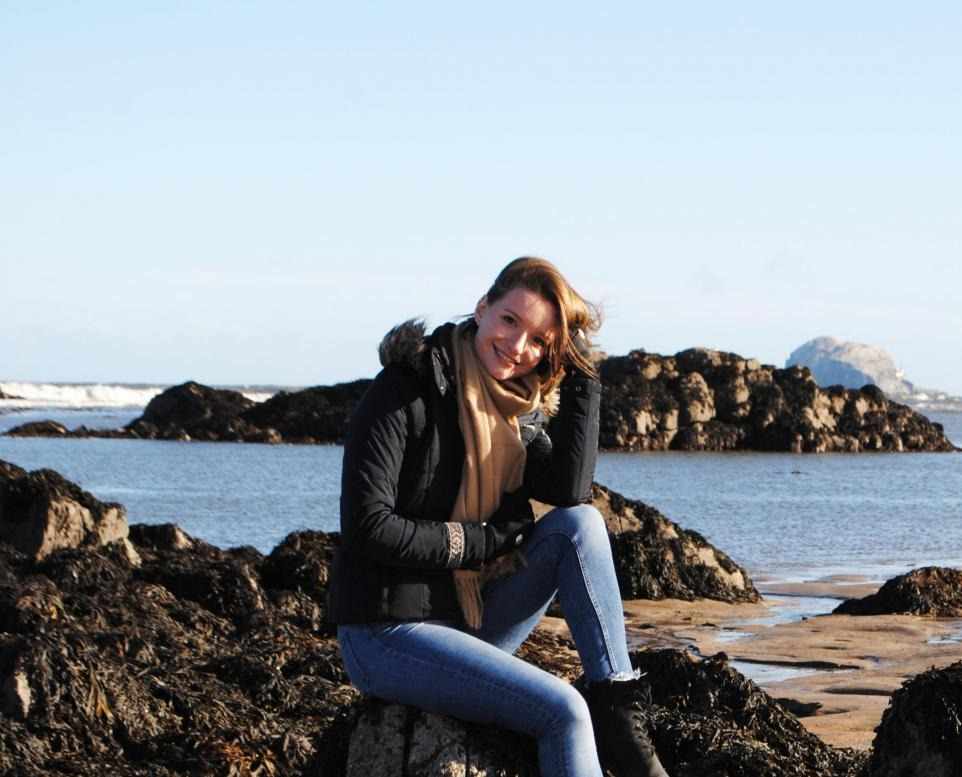Textile artist uses seaweed to create striking artwork
09 May, 2023

For textile designer Jasmine Linington, the first stage of the creative process involves a stroll along the beach. It’s here she harvests the principal material for her striking artwork: seaweed.
“There’s so much more we can do with seaweed,” Jasmine, 29, reflects. “It’s just a great, abundant source to use. I’m using it in an unusual way that hasn’t been tried before. It’s an exciting thing I get to do, and people are drawn to it now, especially as it’s at a time of great environmental concern. It’s sustainable and I’m showing how diverse the material is and what we can do with it in the textile industry.”
The Edinburgh-based artist spent years developing her signature style and mastering techniques to weave seaweed into her textile practice. In 2019, she completed an MFA (Master of Fine Arts) in Textiles at Edinburgh College of Art and has since made a successful full-time career as an artist.
Last year, Jasmine, who is originally from Kent, was selected to represent Craft Scotland at Collect 2022, a prestigious international craft fair held in London. She mostly works from commission and also has work displayed in galleries, exhibitions, hotels and restaurants.
Armed with a small-scale harvesting licence, Jasmine is able to collect raw seaweed from the shoreline which is then thoroughly dried before she meticulously – through various processes – designs and creates seaweed sequins. SeaCell – a seaweed and eucalyptus cellulose – is the fibre Jasmine works with to construct textiles pieces and fabrics using digital and hand embroidery techniques.
Sustainability is respected at each stage of her process and natural dye is used for her fabrics before she embellishes them with seaweed sequins and coloured beads.
“I encourage people to touch my work,” she says. “Being a textile artist, the tactility of my work is really important. If someone wants to feel the kelp sequins, I let them go ahead because it’s unexpected for most people. We think of seaweed as a really slimy substance but the kelp sequins feel like leather. I think people can understand the pieces better if they can feel them and hopefully feel a sense of calm and ease.”
From her home studio, Jasmine’s artwork can take anywhere between a week and three months to create. Using nine different species of seaweed, she produces a range of coloured beads to embellish her natural fabric. She says: “I love the whole process, from going to the beach to the calmness of stitching – which I find very therapeutic.”
Having grown up by the sea, Jasmine has strong ties to the coastline, yet it wasn’t until 2014 when she began to study the varied, delicate intricacies of seaweed. She recalls: “I was walking along the beach and it was the first time I’d properly looked at seaweed as something I could use in my work. It caught my eye because I realised how many different textures, colours and forms of seaweed there were.”
Jasmine also creates jewellery from the natural material and vivid pressed seaweed art. The artist now has a little helper when collecting her supply of seaweed from Scottish shores. Having recently become a mother, Jasmine is looking forward to enjoying beach days with baby in tow ... and seems to be more inspired than ever.
She says: “I would like to develop and work more with natural dyes and bring more colour into my embroidered fabrics. That’s something I’m really excited to work on for this year!”
Useful Links:
Source: www.heraldscotland.com
TAG(s):
